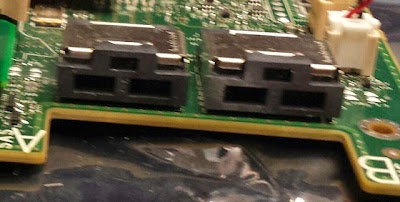Perc H700 Connector Confusion

Throwing this one out there in case anyone hits a similar issue. This one confused the heck out of me but was simple in the end. We have a customer with a Dell T310 server with an H200 RAID adapter. The performance on the H200 is pretty poor. In part because the drive cache is disabled by default. But, search around and you'll see no one has much nice to say about the H200. To improve performance for this server, we ordered an H700i card from Dell. We ordered from Dell rather than aftermarket to avoid issues with compatibility. And so that it would be supported. There are several sets of instructions out there for doing this upgrade. Here is the one I thought was the best: https://practicalsbs.wordpress.com/2014/08/06/upgrading-dell-perc-h200-raid-card-to-h700/ We went through the guide, installed the card, installed drivers, and then went to connect the drive backplane to the card. Uh oh, wrong connector type. You can see above that the new card has a two prong connector that does